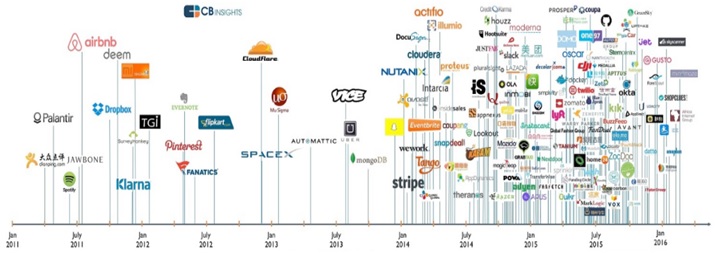WHAT IS INNOVATION?
February 13, 2017
Over the last 15 years, the word innovation has been broadly used in Silicon Valley and the larger tech community to describe anything new. For the unindoctrinated, this has effectively turned Innovation into a buzzword, delegitimizing the core concept and stripping away much of its meaning.

Given the explosion of tech startups and new business models beginning in the mid-90s, there is no doubt some justification for its prolific use. However, it begs the question, what is real innovation?
“The word “novation” first appeared in the thirteenth-century law texts as a term for renewing contracts, it wasn’t a term for creation — it referred to newness. In the particularly entrenched religious atmosphere of the sixteenth and seventeenth century Europe, doctrinal innovation was anathema.”
With those etymological origins, Innovation began a long association with science and industry. Eventually, this definition evolved when, in 1939, Joseph Schumpeter defined innovation as what happens when firms leverage inventions into constructive changes in their business model.
More recently, Bill Aulet, Managing Director of the Martin Trust Center for Entrepreneurship at MIT, defined innovation as invention X commercialization. He argued innovation is Innovation X Commercialization because one without the other equals nothing. One without the other is either just an idea or just a commercial model. I like this definition, but don’t think it captures the whole story.
To me, real innovation is about taking multiple assets (ideas, technology, business models, etc) and combining them such that they create value in excess of the comprising asset value. This is often, but not always measured in economic terms. Said simply, innovation is about creating a ‘whole’ that is greater than the sum of the parts. Using this definition, we can look to a few of the most successful innovators in Silicon Valley to back test this notion –
• Combine Google Maps, Paypal, and a car; you get Uber
• Combine Google Maps, Paypal and a bedroom; you get Airbnb
• Combine MIT and Youtube you get Coursera
There are other examples, but you get the picture.
Now, to be clear, I’m not suggesting Coursera is more valuable than MIT. However, I do believe many of the comprising assets, which have been commoditized over time, can be combined to create value beyond that which is intrinsic to the underlying, commoditized asset.
CEOs engage in a similar pursuit of ‘synergistic’ value all the time – typically via corporate development activities, such as M&A. The trouble with M&A is (1) it’s expensive, and (2) most companies aren’t very good at achieving the ‘synergies’ that justified the underlying transaction. Study after study puts the failure rate of mergers and acquisitions somewhere between 70% and 90% and, for those that complete a transaction, cumulative abnormal returns, measured by accretive EPS, are often unimpressive, especially for the acquirer.

Recognizing the opportunities made possible through combinatorial innovation, Sogeti has invested in building out an Applied Innovation Exchange (“AIE”) network that has cultivated relationships with over 10,000 startups, accelerators and venture capital firms which we combine to help our clients enhance existing business models and develop new ones. And, unlike traditional corporate development activities, these pursuits are (1) relatively inexpensive, and (2) frequently successful. In doing this, we have built an alternative platform for value creation that is lower risk and often higher reward.
So, while I agree with Bill Aulet, I think he is missing one component – the magic needed to explore and identify the combinatorial possibilities made possible by the explosion of emergent technologies and business models. To that end, I propose a new definition – Money X Magic X Technology. All three are needed to achieve real innovation.

 English | EN
English | EN 